Film Research- Thriller films
Gothika
Genre: horror/Supernatural thriller
Year: 2003
Budget-approximately $40million
Gothika is about a psychiatrist who counsels the mentally ill. She Kills her husband and ends up on the other side of the bars within the same mental hospital; she has no memory of what happened, and so tries to find out why this has happened. Whiles she is there she experiences visions of ghosts. It Stars Halle Berry, Robert Downey Jr, and Penelope Cruz. It’s rated a fifteen so this assumes that images within the film are not for young children. The film was directed by Mathieu Kassovitz.
In the opening sequence begins with creepy music showing subtitles and actors starring the film we are then introduced to words at the bottom of the screen from a woman mumbling. These two women are having a conversation about one of the women’s stepfather who she relates to the devil who she is trying to stop from “fucking me” she says. She acts franticly, struggling to control herself appropriately when talking to the other women (Halle Berry) who is questioning her about her past. From this point I assume that the two of them are in a mental institution. She dismisses the discussion only for Chloe to start grabbing her trying to make her understand what she means by knowing what “it is to burn from the inside”. The woman leaves Chloe who is taken away other guys possibly to her room.
From this opening sequence I can see that it is a thriller because of the creepy music that we are introduced to and also the way in which the characters are acting, Chloe is seen to be quite strange in the way she is acting which makes the audience want to know more about this character we know very little of her which shows enigma, a typical convention of a thriller. In terms with the development of our opening sequence I think this film was useful for using elements of horror as well in our work, this instils fear into the viewer, whiles still maintaining a thriller look.
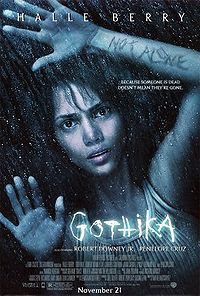
Memento
Release date: December 15, 2000
Memento is a character based film. We can tell this because in the opening minutes of the film we do not learn anything about other characters and are not given many clues of the narrative of the story.
The camera shots in the opening sequence allow us to identify the main character by mainly focusing on him in the opening scenes.
There are many close-ups, low angle and high angle shots. There are also tracking shots following the character, showing the viewer that he is an important part of the film.
The beginning of the film is shown in reverse. It shows Leonard killing Teddy, although it is not explained why in the first few minutes. The film is shot in a non-linear order, meaning the events shown in the film are not chronological. This is a main part of the story as it reveals bits of information gradually to the viewer, causing an enigma in the opening scenes. Instead of a traditional format of equilibrium, disequilibrium and the return of the equilibrium, the film starts off with the disequilibrium with the shooting of Teddy.
In the opening sequence, voice-overs are frequently used as is conversation between characters. The voice-overs are an example of non-diagetic sound as they are not heard by the other characters. While the dialogue is an example of diagetic sound as other characters can hear it.
The voice-overs and dialogue show that the film is character based and it is all from Leonard’s perspective.
The opening sequence of Memento is effective as it slowly reveals information of the main character and his struggle for answers. It keeps the viewer intrigued by showing the disequilibrium first, and making them ask questions about the character. It was useful for our opening sequence as it showed us the value of enigma. A slow reveal of events encourages the viewer to think about the film and urgers them to continue watching.

Films:
Kill Bill/
No Country for Old MenYear: 2003/2008
Director: Quentin Tarantino/The Coen Brothers
The first film’s opening sequence I’m going to analyse is that of Kill Bill. Whilst not being a conventional thriller, the film’s introduction is striking and as-is director Quentin Tarantino’s occasional forte, the film is very hard to define to genre, combining Samurai, Western, Thriller and Adventure. The film was released in 2003, with its concluding part released in February of the following year.
The opening sequence depicts the bloodied face of a nameless female character in a wedding dress. She’s on her back weeping with the voice heard being that of a man standing over her. The man wipes his weapon on a cloth with the name Bill sewn in. The sequence is short, and after a brief exchange, the presumably pregnant woman’s last words of “It’s your bab-” are cut off by a gunshot to the head.
The reason I’ve chosen this opening sequence is not because of the films’ particular genre standing but because of the links it has to that of a conventional thriller. As the man’s face is never revealed, the audience are left questioning who he is (only having a name) and why he’s shot the woman pregnant with his child; the key element in a thriller’s opening sequence. It also comes to an abrupt end, the gunshot being the last thing seen or heard and cue for the opening music.
It introduces the two main characters of the film and sets the tone for a film about a woman seeking revenge for being wronged on that occasion. Bill’s introduction as nothing more than a gravelly voice, a gun, and a name on a napkin sets him up as an extremely dominant character, as does the fact that his view is the camera looking downwards (in correspondence The Bride looking straight up into the camera makes her appear submissive). As there is little real interaction apart from a threat and a plea, the goings on show less about the character themselves and more about their relationship; obviously, there is some incredibly bad blood, but the fact that this woman is carrying his child makes the relationship extremely complicated; again provoking a “Why?” or “How?”
This opening sequence helped with ours from my perspective certainly as the strength a camera angle has in presenting a character it helped us with ideas in where to place shots, such as only utilising a camera being above/below a character in the final action of our opening sequence, always previously having the characters of equal standing.
No Country for Old Men is the second film I’m going to analyse and this subverts the expectations and conventions of the thriller genre whilst maintaining incredible suspense. The 2008 film was directed by the Coen Brothers and achieved great critical acclaim and award.
The initial subversion of the thriller begins as early as possible, with the opening sequence being a slowly paced desert-depicted voiceover courtesy of Tommy-Lee Jones. The film does however subtly fall into convention, with there being a great mystery on the lone character Llewellyn. Standing alone hunting wild desert animals, there is no character to interact with and thus no insight into the man or his motives, add this to his stumbling upon dozens of murdered men and a truck full of heroin, and the typical questioning that a thriller triggers are present. Because of the lack of individuals the characters aren’t emphasised until the film gradually progresses, which in itself also adds to the mystery.
I believe this film helped the development of our own opening sequence more than the former, as it exemplified that you do not need a high-paced opening in order to achieve an incredible tense and furious thriller.
Jamie McLynn
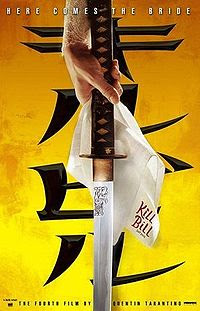
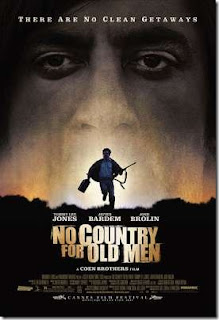
What Lies Beneath
Release date: United States July 21, 2000 United Kingdom October 20, 2000
What lies beneath is a narrative based film. We realise this because the audience learns nothing about the characters from the first couple of minutes from the scene, but from the mysterious momentary power out-age and electric shock from the mains switch, the viewer realises that danger is brooding.
The main character introduced in the opening sequence of the film is a woman in the bath. The opening scene focuses mainly on the water as the credits are shown to be under water and the woman is shown in the bath. While this means nothing to the audience in the inital stages of the film, the focus on it suggest that it will play a greater role later in the film.
During the credits, the camera is shown to be floating through grim and murky water. When the credits have stopped, the camera zooms in on the main characters face, showing her to be of importance to the film. Medium shots are mostly used, focusing mainly on the female character, and establishing that she is in a bathroom but still not showing too much of her surroundings, creating a sesne of mystery around the character.
The mise-en-scene shows a murky lake during the credits. This slowly sets the scene and puts the reader on edge at the start of the film. The dark and grim lighting of the lake contrast with the brighter lights and the white background of the characters bathroom. The steam in the bathroom could suggest a coming danger with the hairdryer symbolising the characters fight against it. While the charcter being naked could symbolise vulnerability and her exposure to danger throughout the rest of the film.
The opening sequence of What Lies Beneath is effective as it sticks to the conventions of a thriller film and creates enigma, while making the viewer want to continue watching. It was useful in the thought process of our opening sequence as it showed us that a narrative based opening sequence can reveal nothing about the plot of the story or the characters but still manage to engage the reader, showing us that we could leave a lot of the film up to the viewers interpretation.
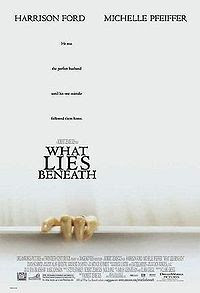
Don’t look now
Genre: Horror/mystery/thriller
Year of film: 1973
The Baxter’s are a family living in the countryside. Everything seems to be fine with their lives until one afternoon, their young daughter Christine falls in a lake and drowns.
The opening sequence shows a lake with the names of the people starring in the film. The audience can assume that this lake may have some significance to what is going to happen in the film.
A girl in a red raincoat is playing with her friend around a pond, they are playing with a ball until it falls into the lake the shot then cuts to a man looking at picture of a church window with a magnifying glass. We see blood start from one side of the picture and spread to the other. At this time the shot is switching from one setting to another to suggest a sort of relation between the two settings we see. This man looks in confusion at the picture and at the same time the friend that Christine is playing with is coming from the lake. The man who is inside emerges from his house and is running across the field towards the lake where this girl has just fallen into. This appears to be her daughter as he looks extremely concerned at what has happened. He jumps into the lake only to find he is too late in saving his apparent daughter, she has drowned and he is completely destroyed.
From this scene we notice a number of things that help in enhancing what is going on. There are a number of camera shots including, close-ups and long shots to show the characters in the beginning and also their surroundings. This all relates back to the lake that we are introduced at the very beginning of the film. The setting of this film is where first view is of the drowning child has taken place.
Watching this opening sequence will help us to think about using our setting and expanding on it for our opening sequence. We could think about using a number of surroundings. That relate to the setting to possibly enhance the genre of our work as well.

Apocalypto and James Bond 'Quantum of Solace film research
Apocalypto
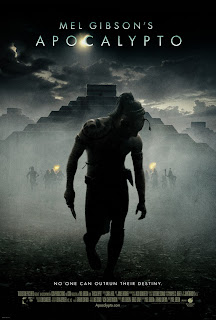
The film Apocalypto is set in Mesoamerican jungle in
Catemaco. We know this information because the background and settings that surround the actors. The Mayan kingdom faces its end, the ruler’s demand the key to prosperity to build more temples and offer human sacrifices. Jaguar Paw is a young man captured for sacrifice he tries to escape to avoid his fate of certain. The opening sequence of this film is character based.
From the moment the film starts you feel you are in the ancient civilization, seeing body tattoos, lots of piercing and jewellery that is handmade and created to represent a tribal. The feel is a intense and action packed film however it is also strange to watch. The heroic person in the film is Jaguar Paw (Rudy Youngblood) is a sly and crafty hunter whose father tells him not to speak about what he saw in forest. He is warned to keep all fear from his heart and not to bring it into the village however his wife, Seven (Dalia Hernandez) is pregnant and their son Turtles Run (Carlos Emilio Baez), live in a village surrounded jungle life. After a night of fun and games, the peacefulness of this small community of hunters crumbles when outsiders begin torching and burning everything in sight killing most and taking away left. Jaguar Paw has an opportunity to escape and get back to his family in peril, but he has to make his way home through a killing field and dangerous jungle, with savage killers waiting to kill him. "Apocalypto" transports the viewers to a strange and unfamiliar world, to a civilization on the edge of extinction.






